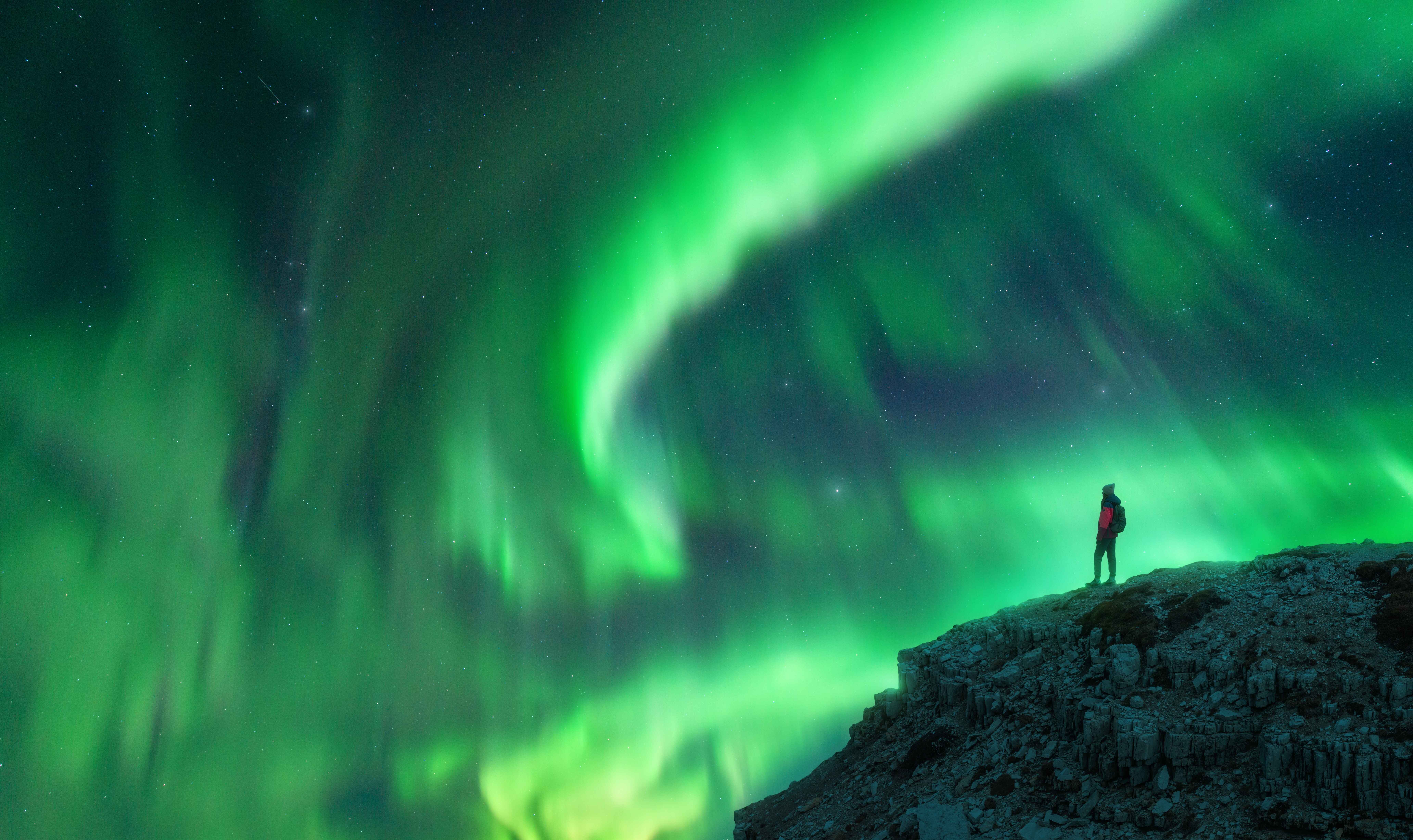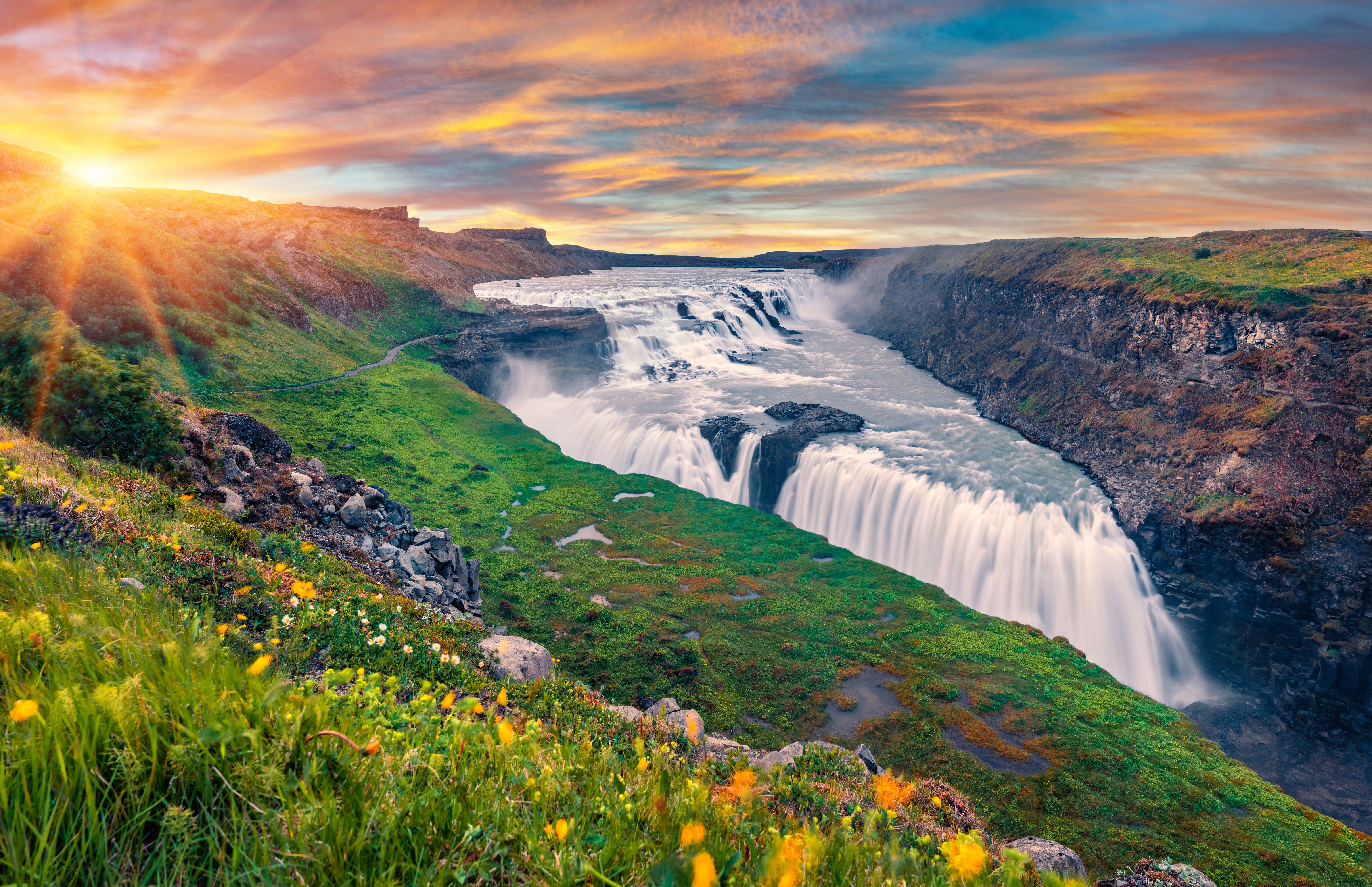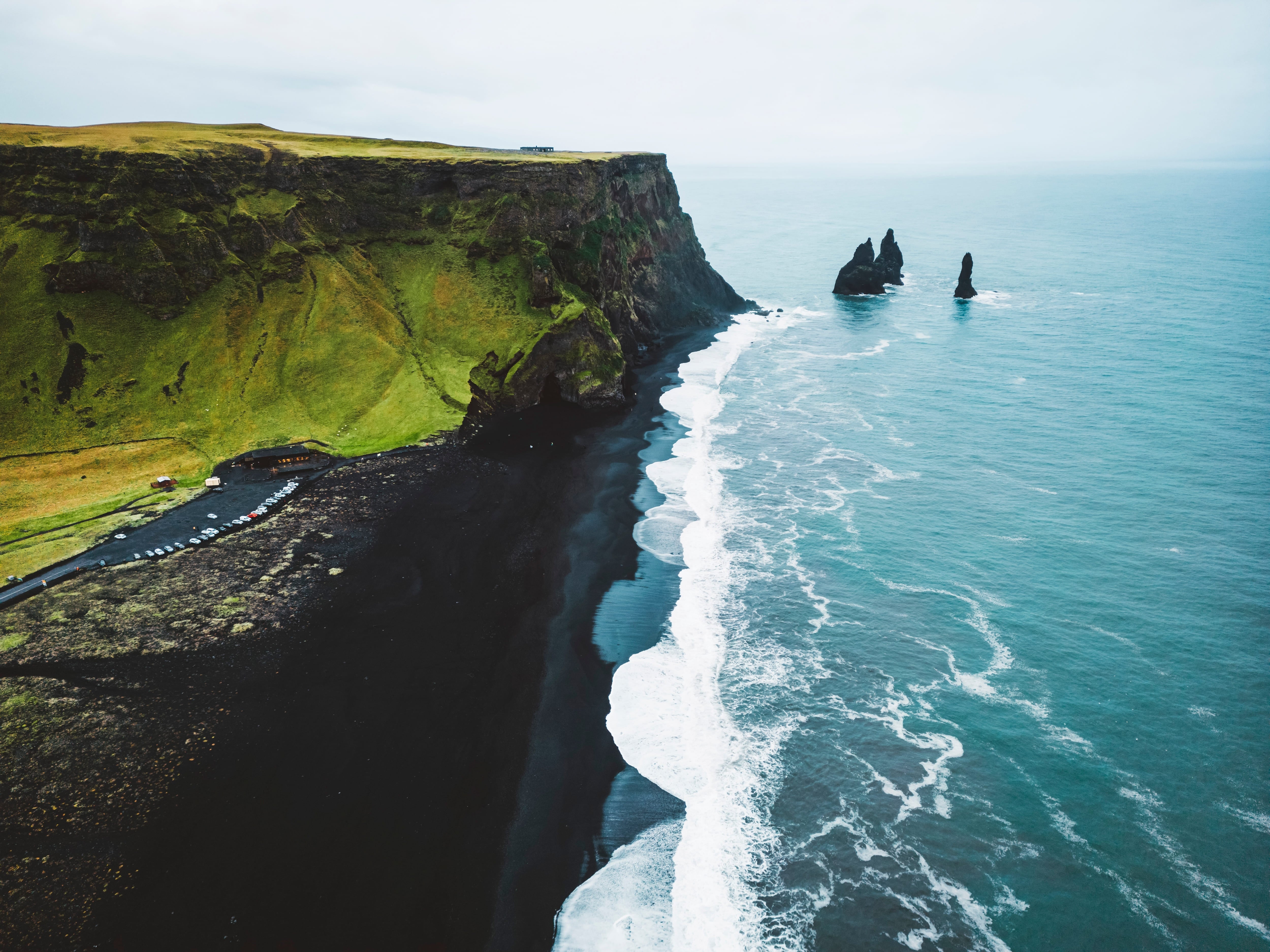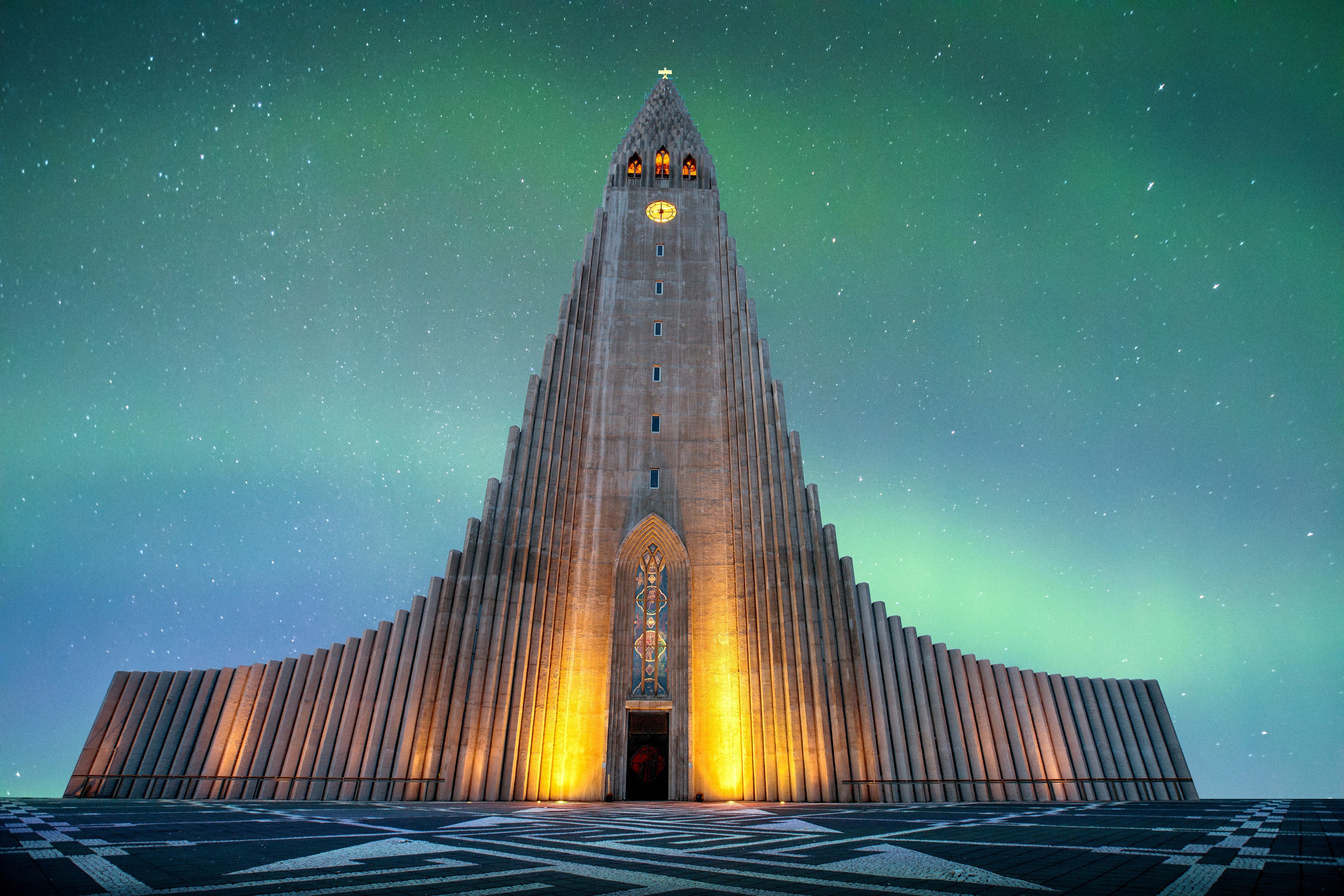Discover the Thridrangar Lighthouse in Iceland, one of the most isolated and awe-inspiring lighthouses in the world. This guide explores everything you need to know about this remarkable structure, from its location off the coast of the Westman Islands to the incredible story of how it was built by hand in 1939.
Standing on a narrow sea stack off Iceland’s southern coast, the Thridrangar Lighthouse is one of the most remarkable lighthouses in Iceland and among the most isolated in the world.
Why You Can Trust Our Content
Guide to Iceland is the most trusted travel platform in Iceland, helping millions of visitors each year. All our content is written and reviewed by local experts who are deeply familiar with Iceland. You can count on us for accurate, up-to-date, and trustworthy travel advice.
Completed in 1939, it was built before helicopters were available, when local mountaineers from the Westman Islands climbed the steep rock using ropes and chains to construct it entirely by hand.
The lighthouse is not open to the public and can only be reached by helicopter for maintenance work. It has also been used in the music video for the song "Break My Baby" by Icelandic band Kaleo.
However, it can sometimes be seen from a distance on certain Westman Islands tours, depending on the weather and visibility.
For travelers drawn to Iceland’s more adventurous experiences, several helicopter tours in Iceland offer similar views of dramatic landscapes, from active volcanoes and glaciers to the craters of the Reykjanes Peninsula and northern lights hotspots.
Interesting Facts About Thridrangar Lighthouse
-
Known in Icelandic as Thridrangaviti, the Thridrangar Lighthouse was built in 1939, before helicopters were available in Iceland.
-
A small team of mountaineers from the Westman Islands climbed the steep rock using ropes, chains, and hand drills to prepare the site for construction.
-
It stands on the tallest of three sea stacks called Thridrangar (“three rock pillars”), which rise about 120 feet (36 meters) above the Atlantic Ocean.
-
The lighthouse itself is a 13-foot-tall (4-meter) concrete structure positioned roughly 112 feet (34 meters) above sea level.
-
A helipad was added in the 1950s, allowing helicopter landings for maintenance. It is still the only safe way to reach the lighthouse today.
-
The light was originally powered by oil lamps and later converted to solar energy in the 1990s.
-
It remains an active navigation aid operated by the Icelandic Coast Guard.
-
The lighthouse gained worldwide attention in 2016 when a photo of it went viral online, even catching the attention of pop singer Justin Bieber.
-
In 2020, Icelandic rock band KALEO filmed part of their “Break My Baby” music video on the lighthouse’s helipad.
-
Its extreme isolation has even led the internet to call it the perfect place to survive a zombie apocalypse, a playful nickname that highlights just how remote this lighthouse really is.
Where Is the Thridrangar Lighthouse Located?
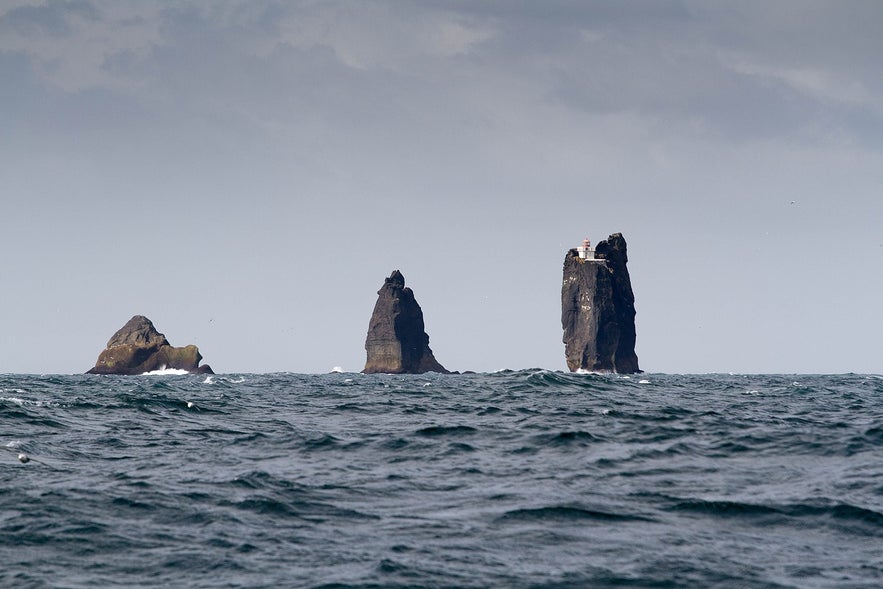
Photo from Wikimedia, Creative Commons, by Panoramio. No edits made.
The Thridrangar Lighthouse is located off the southern coast of Iceland, about 4.5 miles (7 kilometers) west of the Westman Islands archipelago. It stands on top of a steep sea stack in the North Atlantic Ocean, part of a small cluster of three isolated rock pillars known as Thridrangar, which translates to “three rock pillars.”
The sea stacks rise abruptly from the open ocean with no nearby land, harbor, or connecting bridge. The lighthouse sits on the tallest stack, called Storidrangur, which reaches about 120 feet (36 meters) above sea level. This exposed location places it directly in one of Iceland’s most unpredictable marine environments, where strong winds and powerful waves are constant.
Although the lighthouse is technically part of the Vestmannaeyjar region, it is completely surrounded by ocean, separated from the nearest island by several miles of rough water.
How the Thridrangar Lighthouse Was Built
The Thridrangar Lighthouse was completed in 1939 on Stóridrangur, the tallest of the three sea stacks. The project was directed by Árni G. Þórarinsson, who was tasked with constructing a lighthouse in one of Iceland’s most inaccessible locations to make navigation safer along the country’s southern coast.
In 1938, Þórarinsson assembled three experienced mountaineers from the Westman Islands to climb the stack and prepare the site. Using ropes, chains, and hand tools, they scaled the slick rock face battered by sea spray. Near the top, where the cliff curved outward, they famously formed a human ladder to reach the ledge above and secure the final chain.
Once access was established, materials were hauled up piece by piece, and the concrete lighthouse was completed within a month. The light itself wasn’t installed until 1942, after wartime delays prevented delivery of the original equipment from Denmark.
When the first climbers reached the summit, they reportedly found two 66-pound (30-kilogram) cannonballs embedded in the rock, a mystery that remains unsolved.
Inside the Thridrangar Lighthouse
The Thridrangar Lighthouse is exactly what you’d expect from one of the most remote lighthouses in Iceland. Standing about 24 feet (7.4 meters) high, the structure has a single floor with a narrow deck and a lamp mounted on the roof. It was designed entirely for maritime safety.
Thridrangar Lighthouse's interior is small and straightforward, containing only the essential lighting and communication systems needed to keep it operational. There are no living quarters or amenities, as it was never intended to house keepers or visitors.
Although the lighthouse is now automated, it remains in excellent condition. The Icelandic Coast Guard conducts regular maintenance to ensure the structure and its light continue to operate reliably along Iceland’s southern coast.
Visiting the Thridrangar Lighthouse in Southern Iceland
The Thridrangar Lighthouse is not open to visitors. Its position on a narrow sea stack surrounded by the North Atlantic makes it virtually impossible to reach safely. The rock has no natural landing point, and even in calm weather, high waves and strong winds make access dangerous.
The only way to reach the lighthouse is by helicopter, and landings are limited to maintenance crews from the Icelandic Coast Guard.
While travelers cannot visit the lighthouse itself, it can occasionally be seen from afar. On clear days, it may be visible from certain viewpoints in the Westman Islands, although sightings depend heavily on weather conditions.
Things To Do Near Thridrangar Lighthouse
 Although the Thridrangar Lighthouse itself cannot be visited, the surrounding Westman Islands offer a wide range of tours and natural attractions worth exploring. This volcanic archipelago off Iceland’s South Coast is famous for its dramatic cliffs, thriving bird colonies, and volcanic landscapes shaped by centuries of eruptions.
Although the Thridrangar Lighthouse itself cannot be visited, the surrounding Westman Islands offer a wide range of tours and natural attractions worth exploring. This volcanic archipelago off Iceland’s South Coast is famous for its dramatic cliffs, thriving bird colonies, and volcanic landscapes shaped by centuries of eruptions.
One of the best ways to experience the area is through Westman Islands tours and Heimaey shore excursions. The Small Island Boat Tour from Vestmannaeyjar takes you around the islands’ coastline and nearby sea stacks. While sightings of the Thridrangar Lighthouse are not guaranteed, the tour may offer distant views of the sea stack where it stands. Bring binoculars to improve your chances of spotting it on clear days.
In Heimaey, the largest and only inhabited island in the archipelago, visitors can explore a mix of volcanic terrain, coastal scenery, and wildlife habitats. The island is home to Eldfell Volcano, which famously erupted in 1973, forcing the evacuation of all residents.
Today, travelers can hike up its red slopes for panoramic views or visit the Eldheimar Museum to learn how the town was rebuilt after the eruption.
Heimaey is also a hub for puffin watching, especially from Storhofdi, known as one of the windiest places in Europe. Other highlights include the SEA LIFE Trust Beluga Whale Sanctuary, Herjolfsdalur Valley, and the iconic Elephant Rock, a sea cliff naturally shaped like an elephant’s head.
Frequently Asked Questions About Thridrangar Lighthouse
Learn more about Iceland’s remote Thridrangar Lighthouse with these frequently asked questions.
Is the Thridrangar Lighthouse real?
Yes, the Thridrangar Lighthouse, known in Icelandic as Þrídrangaviti, is a real and fully operational lighthouse off Iceland’s southern coast. It has become well-known online for its isolated setting and striking photographs.
Can you visit the Thridrangar Lighthouse in Southern Iceland?
The lighthouse is not open to visitors due to its extreme location on a sea stack in the North Atlantic. However, it may sometimes be visible from certain Westman Islands tours or helicopter trips in clear weather.
How did they build the Thridrangar Lighthouse?
Construction of the lighthouse began in 1938 and finished in 1939. Without modern climbing gear, workers had to scale the steep sea stack on which it is located. They carved out a flat surface by hand before building the lighthouse. It remains a remarkable feat of engineering.
Does anyone live in the Thridrangar Lighthouse?
No, the Thridrangar Lighthouse has never been inhabited. It was built for navigation only and has no living space. Maintenance crews visit occasionally by helicopter to inspect and service the light.
Why is the Thridrangar Lighthouse uninhabitable?
Its exposed position makes it impossible to live there. The sea stack offers no shelter or space for living quarters, and conditions are often windy, cold, and unpredictable.



